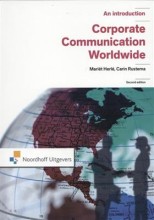Early thinking and New Archaeology
16 important questions on Early thinking and New Archaeology
What are characteristics of the transition to New Archaeology?
- Line of argument building will become more responsible in terms of how it comes to a conclusion
- Meaning of responsible: line of argument building will show more accountability, effectively done by the notion of process; processual archaeology
What method does New Archaeology follow?
- The theoretical narrative that you have, makes the path that you walk down towards your insights, theoretical accountable
- Theoretical accountability needs to:
- Be transparent
- Connect with existing practices in archaeology
- Make logical sense
What theory does New Archaeology follow?
- Discussion of the ongoing process that is happening in archaeology
- Explicit assumptions (Clear and detailed hypotheses)
- Theory generates the questions
- Method and theory is about critically analysing your archaeological assumptions
- Higher grades + faster learning
- Never study anything twice
- 100% sure, 100% understanding
Fluid area interaction (culture areas, cultural history)
- Traits flowing & rippling from culture to culture
- Cultural influences, change and the formation and demise of cultures were deemed to flow from cultural centers outwards
- Totality of traits seen as ‘archaeological cultures’
- Seek particularities instead of similarities across cultures
By what movement where culture areas and fluid area interactions criticized?
- Criticized by New Archaeology
- Trying to understand cultural change was insufficient (niet voldoende)
- Defective argument building (gebrekkig beargumenteerd)
What came instead of culture areas and fluid area interactions? Who invented this?
Picked a natural feature as a focus for study
What does Flannery say about how culture historians treat culture?
- Treat culture as a body of shared ideas, values, and beliefs = the norms of a human group
- Members of a culture are committed to these norms in different degrees -> norm is a bell-shaped curve of opinions on how to behave
- Members of a culture are committed to these norms in different degrees -> norm is a bell-shaped curve of opinions on how to behave
- Artifacts are viewed as products of these shared idea -> range of variation that takes the form of a bell shaped curve
What is the principle feature for cultural historical analysis?
What is a strong pre-occupation of culture history?
Culture history and spatial location
- Where do we draw boundaries?
- Where do we see one cultural unit slip into another one?
- Where does that happen?
- Is it a natural feature that divorces two cultural units?
Culture history and statigraphy position
-> to get a better grasp
Culture history and types
What does culture history mean with styles bleed?
How does culture history explain cultures becoming more similair?
Not spatial but temporal distribution (verspreiding) -> uptake (opname) cultural traits
What was critique on cultural history?
- Problem of implicit reasoning = verklaringen/uitspraken worden als vanzelfsprekend beschouwd, niet beargumenteerd
- Limitations normative view = the ideas that culture areas were bound together by values, ideas shared norms -> critique: insufficient to understand cultural change and how do we deploy this in archaeological understanding
- Gave rise to ‘New Archaeology’
Who critiqued culture history?
The question on the page originate from the summary of the following study material:
- A unique study and practice tool
- Never study anything twice again
- Get the grades you hope for
- 100% sure, 100% understanding































